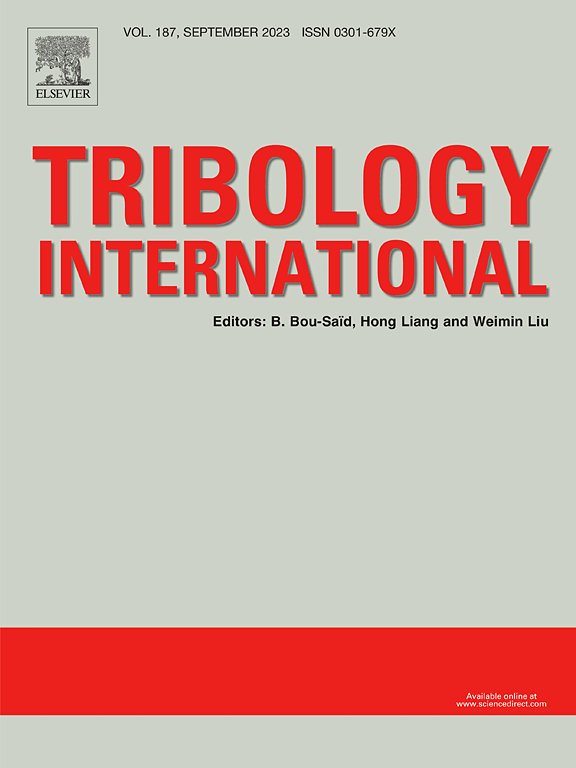Influence of mechanical properties on cavitation-erosion via cavitating jet
IF 6.1
1区 工程技术
Q1 ENGINEERING, MECHANICAL
引用次数: 0
Abstract
A wide range of materials, including aluminum, copper-based alloys, and stainless steel, were studied to correlate mechanical properties with cavitation erosion rates. Cavitation erosion tests using a cavitating jet apparatus showed that AA 6063 aluminum had the highest maximum erosion rate (MER), 171 times higher than bronze, the most erosion-resistant material. Mechanical tests, including microhardness, depth-sensing indentation, quasi-static, and high-strain rate tests, revealed that cavitation erosion does not correlate with a single property. Results indicated that MER increases with decreasing hardness, plastic indentation work, and wear resistance index. Furthermore, quasi-static and high-strain rate tests showed that MER increases with decreasing toughness, ultimate strength, and flow stress. This study offers comprehensive insights into the cavitation erosion behavior of materials.
力学性能对空化射流空化侵蚀的影响
广泛的材料,包括铝,铜基合金和不锈钢,研究了机械性能与空化侵蚀速率的关系。空化喷射试验表明,AA 6063铝具有最高的最大侵蚀率(MER),是最耐蚀材料青铜的171倍。机械测试,包括显微硬度、深度感测压痕、准静态和高应变率测试,显示空化侵蚀与单一性能无关。结果表明,随着材料硬度、塑性压痕功和耐磨性指数的降低,材料的MER增加。此外,准静态和高应变率试验表明,随着韧性、极限强度和流动应力的降低,MER增加。该研究对材料的空化侵蚀行为提供了全面的见解。
本文章由计算机程序翻译,如有差异,请以英文原文为准。
求助全文
约1分钟内获得全文
求助全文
来源期刊

Tribology International
工程技术-工程:机械
CiteScore
10.10
自引率
16.10%
发文量
627
审稿时长
35 days
期刊介绍:
Tribology is the science of rubbing surfaces and contributes to every facet of our everyday life, from live cell friction to engine lubrication and seismology. As such tribology is truly multidisciplinary and this extraordinary breadth of scientific interest is reflected in the scope of Tribology International.
Tribology International seeks to publish original research papers of the highest scientific quality to provide an archival resource for scientists from all backgrounds. Written contributions are invited reporting experimental and modelling studies both in established areas of tribology and emerging fields. Scientific topics include the physics or chemistry of tribo-surfaces, bio-tribology, surface engineering and materials, contact mechanics, nano-tribology, lubricants and hydrodynamic lubrication.
 求助内容:
求助内容: 应助结果提醒方式:
应助结果提醒方式:


